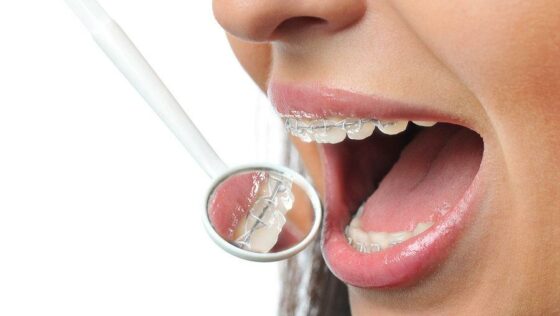The Buzz on Legacy Orthodontics
Wiki Article
Our Legacy Orthodontics Statements
Table of ContentsThe 25-Second Trick For Legacy OrthodonticsIndicators on Legacy Orthodontics You Should KnowExcitement About Legacy OrthodonticsExcitement About Legacy OrthodonticsLegacy Orthodontics - The Facts
In addition, we supply adjustable therapy timetables, versatile payment alternatives and a fun, enjoyable experience.An orthodontist is a dental professional educated to diagnose, protect against, and treat teeth and jaw abnormalities. Orthodontists function with people of all ages, from youngsters to adults.
Malocclusion, or misaligned teeth, can lead to oral problems, including dental cavity, periodontal illness, and tough or unpleasant chewing. Yet not everyone is born with straight teeth. If you have a bad bite or big areas in between your teeth, you may wish to consult a dental practitioner focusing on orthodontic treatment.
The Single Strategy To Use For Legacy Orthodontics
( Picture Credit History: DigitalVision/Getty Images) Orthodontists use dealt with and removable dental devices, like braces, retainers, and bands, to alter the setting of teeth in your mouth. Orthodontic therapy is for dental irregularities, including: Jagged teethBite issues, like an overbite or an underbiteCrowded teeth or teeth that are too far apartJaw misalignmentThe objective of orthodontic therapy is to improve your bite.While you may think of orthodontists as primarily for kids or teenagers who need braces, they can remedy dental troubles at any kind of age. Orthodontists participate in university, dental college, and orthodontic college.
All orthodontists are dental professionals, but not all dental practitioners are orthodontists. Orthodontic residency programs supply intensive, focused direction for dental specialists. They concentrate on 2 areas: How to properly and securely relocate teeth How to properly lead growth in the teeth, jaw, and faceOnce an orthodontist has completed training, they have the option to become board certified.
Legacy Orthodontics for Dummies
Malocclusion leads to tooth overcrowding, a twisted jaw, or uneven bite patterns. Malocclusion is usually treated with: Your orthodontist connects metal, ceramic, or plastic square bonds to your teeth.If you have just small malocclusion, you might be able to utilize clear dental braces, called aligners, rather of traditional braces (https://www.anyflip.com/homepage/oxhxt). Some people require a headwear to aid move teeth right into line with stress from outside the mouth. After dental braces or aligners, you'll need to use a retainer. A retainer is a custom device that maintains your teeth in area.
They're frequently utilized on youngsters. They can develop added room in the mouth without having to pull teeth. If you have a severe underbite or overbite, you may need orthognathic surgical treatment (likewise called orthodontic surgical treatment) to extend or reduce your jaw. Orthodontists make use of cords, medical screws, or plates to sustain your jaw bone.
You might need to see an orthodontist if you have: Crowding or not sufficient space for every one of your teethOverbite, when your top teeth come over your bottom teethUnderbite, when your base teeth are also much forwardSpacing or issues with gapsCrossbite, which is when your top teeth fit behind your bottom teeth when your mouth is closedOpen bite or a vertical space between your front bottom and click over here now upper teethMisplaced midline, when the facility of your bottom and upper teeth don't line up Fixing a dental malocclusion can: Make biting, chewing, and talking easierImprove the balance of our face and your general appearanceEase pain from temporomandibular joint conditionsSeparate your teeth and make them simpler to clean, helping protect against dental caries or dental caries It's usually a dental practitioner that first notices misaligned teeth throughout a regular examination.
The 3-Minute Rule for Legacy Orthodontics

Throughout your initial orthodontic assessment, you'll likely have: An oral examPhotos taken of your face and smileDental X-raysPanoramic (360 level) X-rays of your face and headImpressions to produce molds of your teethThese examinations will certainly assist your orthodontist understand exactly how to continue with your therapy. leesburg orthodontist. An orthodontist is a dental expert that's had training to treat your teeth and jaw
Orthodontists may carry out surgical treatment, exams,X-rays,and more to help you attain an extra comfortable, healthier smile. An orthodontist is focused on your bite, so something like a cracked tooth would certainly be dealt with by a dentist. Orthodontists are dental practitioners but not all dental practitioners are orthodontists. Orthodontists are concentrated on your bite, or the way your teeth meshed, and the straightness of your teeth. Ever before questioned how celebrities always seem to have completely straightened teeth? Orthodontists are oral specialists who focus on fixing irregularities in the teeth and jaws.
Our Legacy Orthodontics PDFs

, orthodontists have a diverse toolkit at their disposal. These tried-and-true braces utilize a system of brackets bonded to the teeth and connected by cords.
Clear aligners, like Invisalign, are a preferred alternative for clients seeking a much more discreet therapy choice. These removable trays are customized to progressively change the teeth's placement. Headgear might be made use of in conjunction with braces or aligners to use added targeted pressures, particularly for correcting jaw disparities. In situations of slim jaws, palatal expanders can be utilized to create space for correct tooth positioning.
Report this wiki page